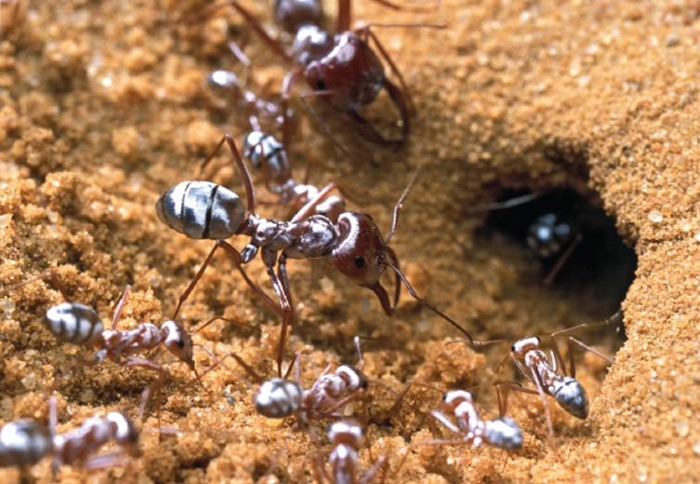- Home
- >
- The African silver ant is one of the few organisms that can survive in high temperatures
The African silver ant is one of the few organisms that can survive in temperatures exceeding 50 degrees Celsius. Scientists have discovered the key to their survival: silver-colored hairs.
-

非洲銀蟻 (學名 Cataglyphis bombycina )Courtesy: P Landmann
The Sahara Desert in Africa is one of the most inhospitable environments on Earth. With its dry climate and temperatures that easily exceed 40 degrees Celsius, survival is a challenge for any organism. However, the African silver ant (Cataglyphis bombycina) has developed unique adaptations that allow it to thrive in this extreme environment.
To survive under the scorching sun, African silver ants have evolved special structures, such as elongated legs, to minimize direct heat transfer from the hot ground. Additionally, scientists discovered that the key to their heat resistance lies in their silver-colored hairs.
Researchers from Belgium conducted a detailed study on the African silver ant. Using scanning electron microscopy, they observed the hairs of these ants and found that they have a triangular shape, with one side closer to the body being smoother while the other two sides exhibit folds. This triangular structure serves a special purpose: when visible light or near-infrared (NIR) rays with an incident angle of 35-90 degrees hit these hairs, they act as mini prisms, reflecting the light via total internal reflection. Even at shallow angles of incidence, visible light can penetrate the hairs, but it is likely to be reflected by subsequent layers of hairs.
In other words, the surface of the African silver ant acts like a mirror, reflecting a significant amount of sunlight and preventing excessive heat absorption. Additionally, these hairs possess excellent thermal radiation in the mid-infrared (MIR) wavelength range, allowing excess heat to be efficiently radiated away to cool the ants.
To verify their observations, the researchers compared the reflection properties of ants with and without hairs. The results showed that ants without hairs reflected light ten times less effectively than those with hairs. They also conducted laboratory experiments that simulated the Sahara Desert environment and measured the ants' body temperatures using digital thermometers. After 90 seconds in this environment, ants without hairs exhibited an average temperature increase of two degrees Celsius compared to those with hairs.
If the hairs of these ants were cylindrical instead of triangular, computer simulations showed that the reflection properties would be considerably worse, suggesting that cylindrical hairs would not allow the ants to survive in the desert. Therefore, this triangular hair structure is likely a result of natural selection.
The African silver ant's ability to withstand the extreme temperatures of the Sahara Desert is a remarkable example of adaptation in nature. By utilizing their silver-colored hairs, these ants can regulate their body temperature and continue to thrive in one of the harshest environments on Earth.
Author: Chen, Jinghao
As a science writer, Chen Jinghao holds a Ph.D. in relativistic heavy-ion collisions from SUNY at Stony Brook. He has served as an editor for the Chinese science news website "Sciscape.org."
